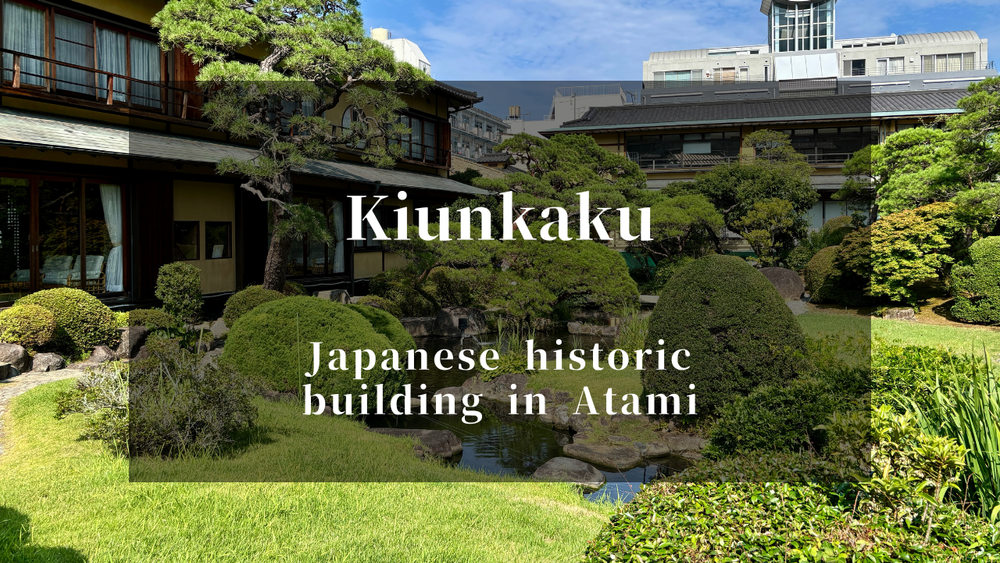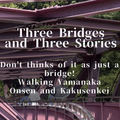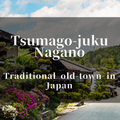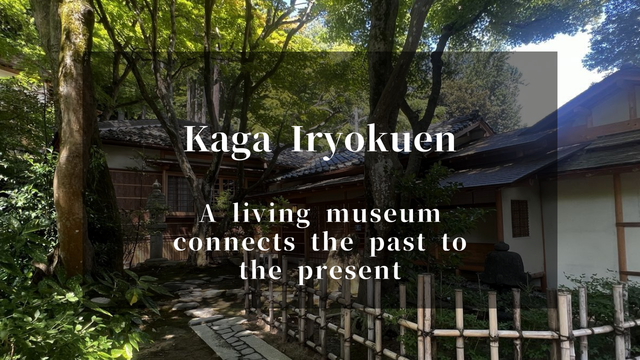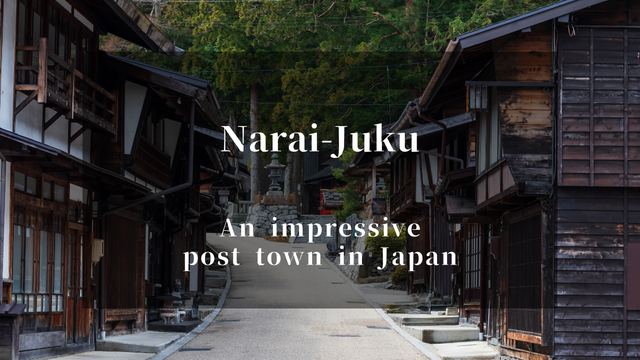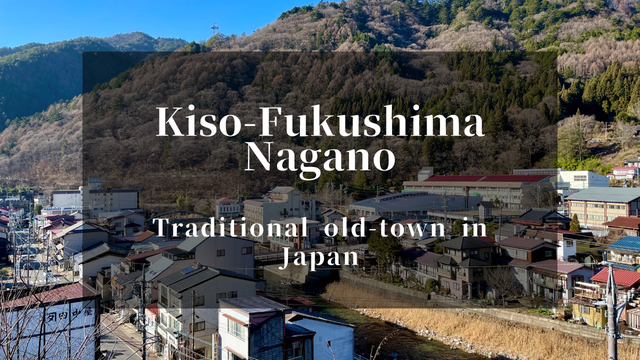What would you think of doing when you visit Atami? Eat and stroll in the shopping district in front of the station? Head to a hot spring hotel as soon as you arrive?
That is one of the best ways to spend your time in Atami, but if you go a little further, you will find a nostalgic, photogenic spot that architecture enthusiasts won't want to miss.
It is called Kiunkaku (起雲閣) and was built in 1919. Kiunkaku is known as one of the “Three Great Villas of Atami”. Let's take your travel satisfaction to the next level by visiting a famous architectural landmark in Atami!
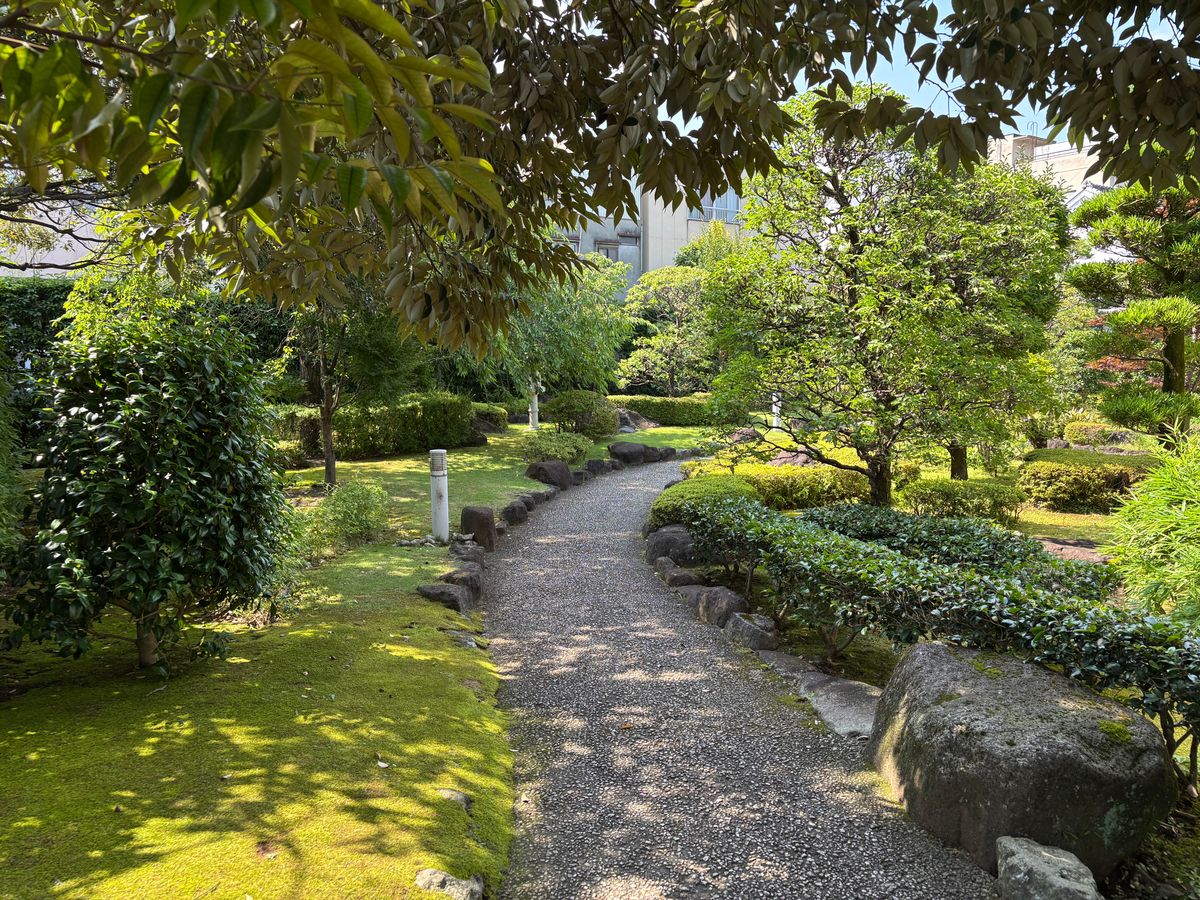
How to get to Kiunkaku from Atami Station
It is a 20-minute walk from Atami Station, and it is recommended to walk there in spring, autumn and winter. There are some nice shops and places to eat along the way. However, during the hot summer months, there is a risk of heatstroke, so it is safer to take the bus.
Free fans are available to borrow at Kiunkaku, but please note that some areas are not air-conditioned.
The bus route from Atami station to Kiunkaku is as follows.
Bus stop No. 1: Izu Hakone Bus (bound for Ainohara Danchi, Umezono, Shimizu-cho circulation) - get off at ‘Kiunkaku-mae’ and you will find it in front.
Bus stop No. 2: Izu Hakone Bus (bound for Sasaragadai Danchi, Nishiyama, Hakone) - get off at ‘Kiunkaku-mae’ and you will find it in front.
Bus stop No. 3: Izu Tokai Bus (bound for Hibarigaoka, Kamiyama, Momijioka) - 2 min. walk from ‘Tenjin-machi’
Bus stop No. 6 Izu Tokai Bus (for Ajiro via Sakimicho) - 2 min. walk from ‘Tenjin-machi’
Yu~yu~ bus stop - get off at ‘Kiunkaku-Nishiguchi’ and you will find the entrance in front.
For more information on how to get on the bus, please see below.
There are 37 free regular car parking spaces for those arriving by car. If these are full, there is also a nearby municipal car park. Medium-sized buses can also be parked, but prior booking is required.
For admission
Check the basic information provided in this section first. Otherwise, you may find that it is closed or that there is more to see than you expected. This will help you to plan your visit and find out if you can pay by card on arrival.
[Opening hours] 9:00 am – 5:00 pm (last admission 4:30 pm).
[Duration] 40–60 minutes
[Closed] Wednesdays and 26–30 December. Open if Wednesday is a Japanese public holiday.
[Admission] Adults: 610 yen / Junior and senior high school students: 360 yen / Elementary school students and younger: free
*Groups and disabled persons- Adults: 460 yen / High school and junior high school students: 240 yen / Free for primary school students and younger. Please note! Payment by cash only!
Three wheelchairs are available to hire, so please ask at reception if you would like to borrow one.
Pets are not allowed, except for assistance dogs for people with physical disabilities. It is better to let the receptionist know if this applies to you.
You can take photos everywhere except in the temporary exhibition rooms. Video recording is not permitted, but you can take lots of photos to preserve the memories of your trip.
There are volunteer guides in the museum who do not need to be booked in advance. Alternatively, you can book a professional guided tour via the inquiry form on the homepage, although an additional cost of 1,000 yen per group of fewer than 10 people applies, and advance booking is required at least two weeks in advance of your visit.
Please note that eating, drinking and smoking are prohibited outside designated areas.
Let's enter the Kiunkaku museum!
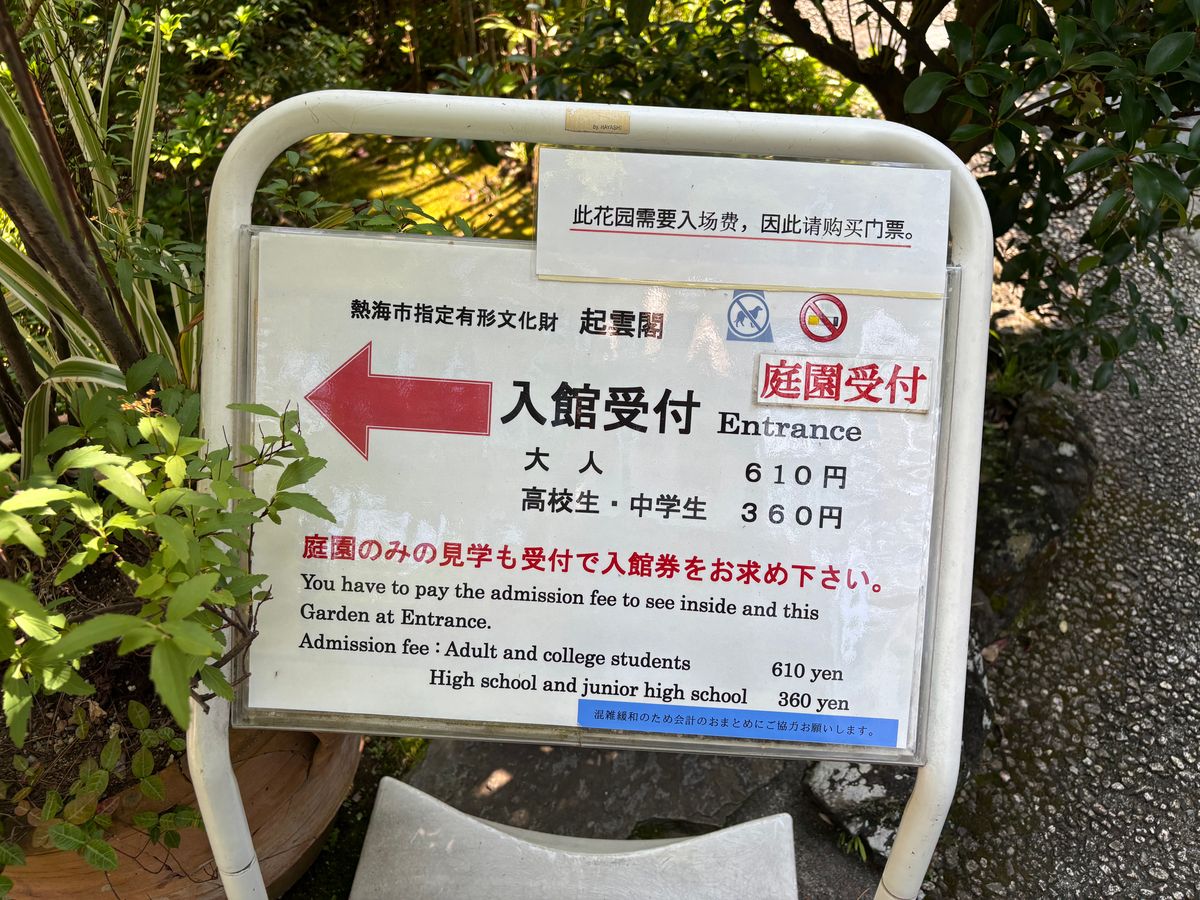
After paying the entrance fee at reception, take off your shoes and place them in the shoe locker to the left of the entrance, locking it afterwards. Make sure you take the key with you not to lose it.
If you have any large belongings, you can also leave it in the locker at the back on the right. A separate refundable cash fee of 100 yen is required, so please remember to have it ready.
Large suitcases and similar items will not fit, so please ask the Kiunkaku staff for assistance, for example by asking reception to keep them for you.
Highlight of Kiunkaku
As soon as you enter, head for the Japanese-style architecture named “Kirin“(麒麟) (means giraffe) and “Taiho“(大鳳)(means chinese phoenix). Volunteer guides are available here to provide explanations.
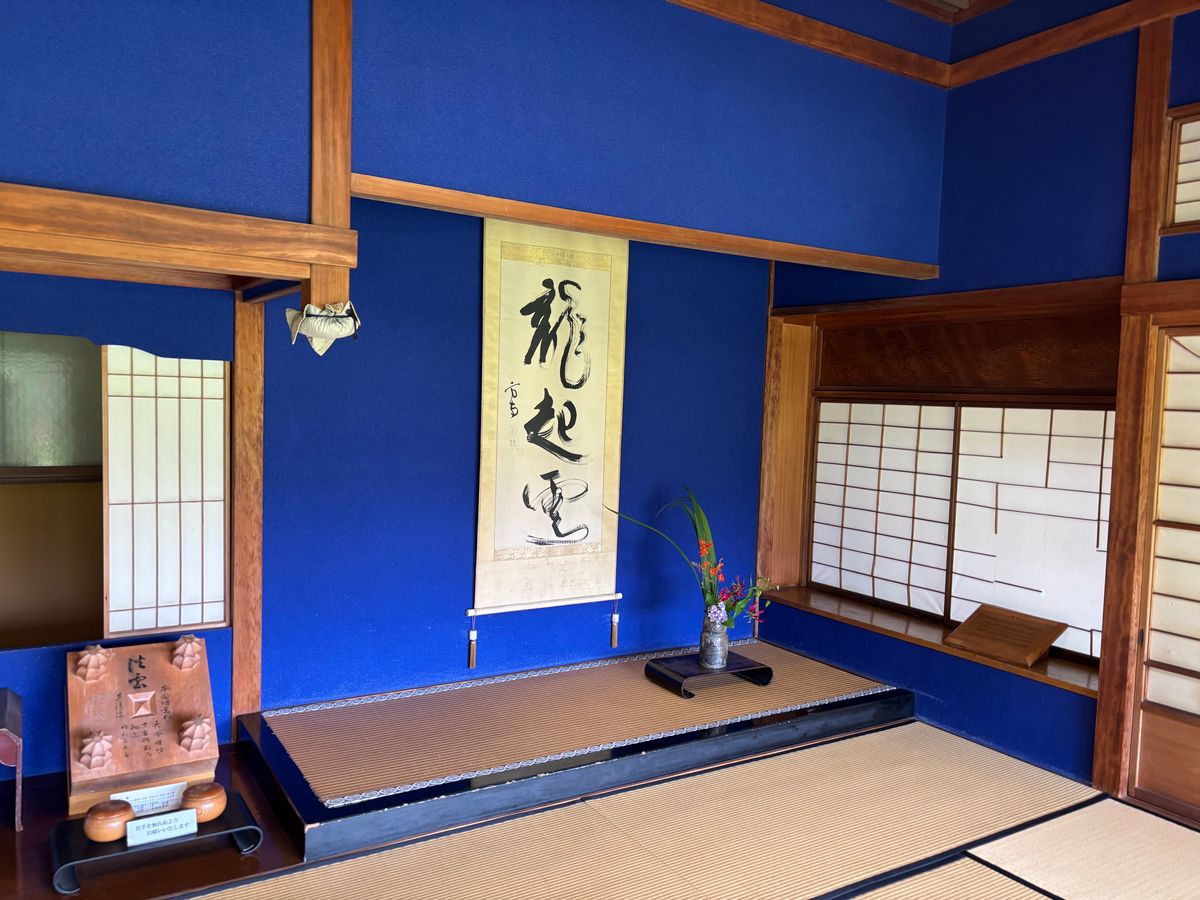
Kiunkaku has its roots as a private villa built in 1919 by Nobuya Uchida, a politician and businessman who had found success in the war economy of World War I. It was intended as a place for his mother to rest.
Construction of the building, including the tatami (which is a Japanese straw floor covering) room and entrance, began in 1918 and was completed in 1919.
The building has a traditional Japanese architectural style, and the distinctive blue walls were used traditionally in the Kanazawa area of Japan.

The next highlight is the Western-style building “Tamahime” (玉姫) (means a Japanese princess).
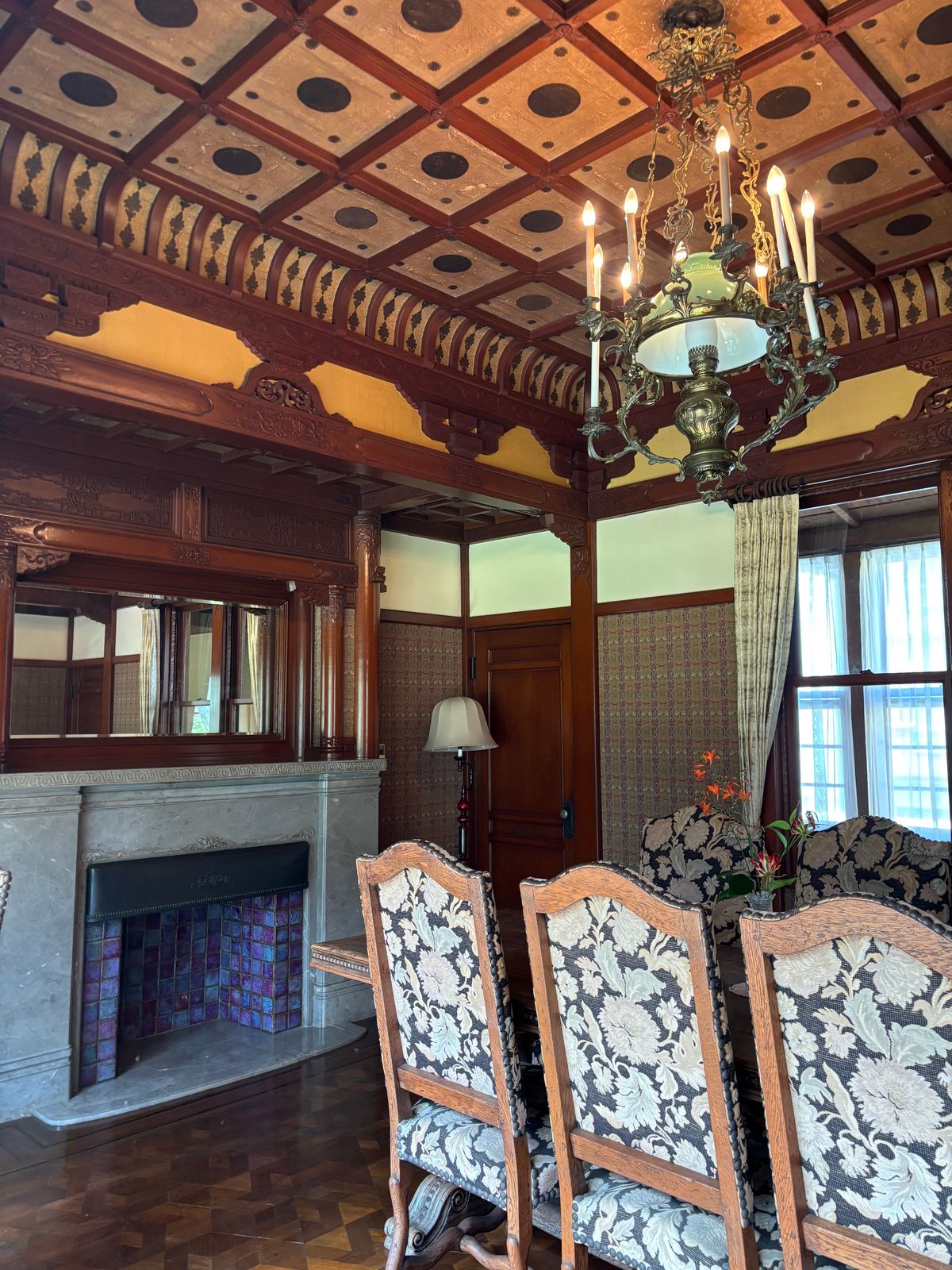
Construction of the building was started in 1931 and completed in 1932 by the second owner, Kaichiro Nezu, a politician and businessman known as the shipping magnate.
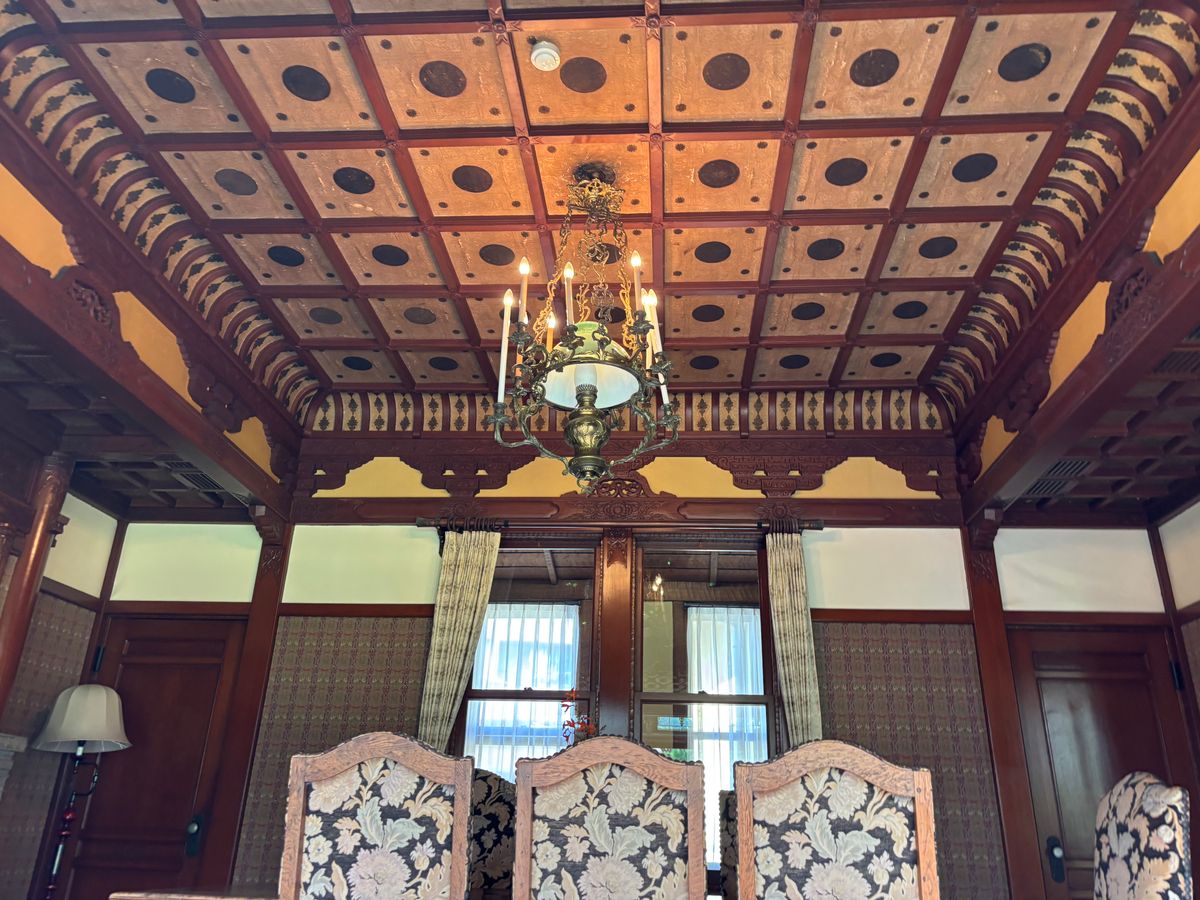
Although Tamahime is based on a European design with a central fireplace, the ceiling and other parts of the building feature architectural styles found in Japanese shrines and temples.
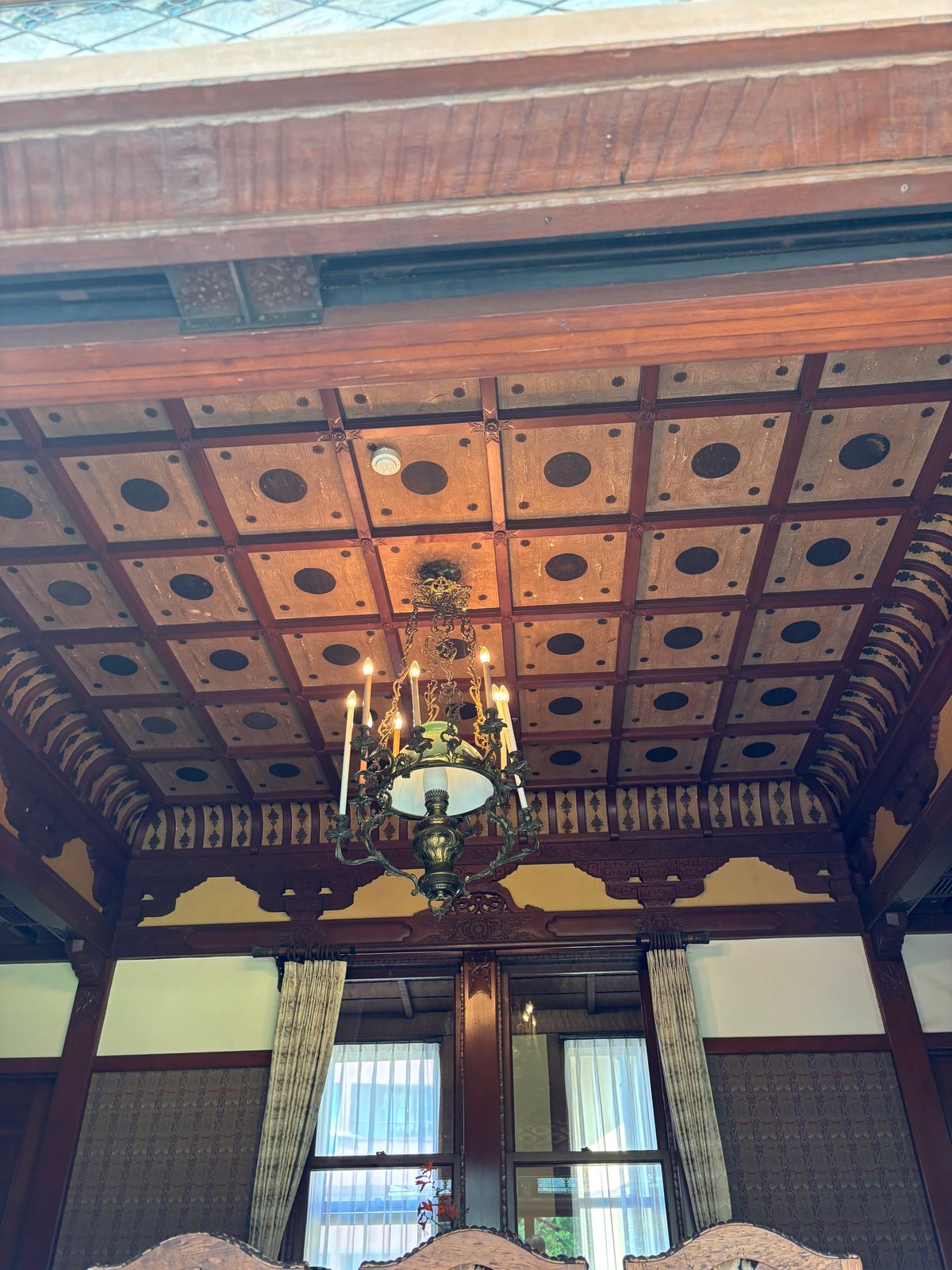
It is also adorned with Chinese-style carvings featuring "joy" motifs and arabesque patterns typical of the Silk Road.
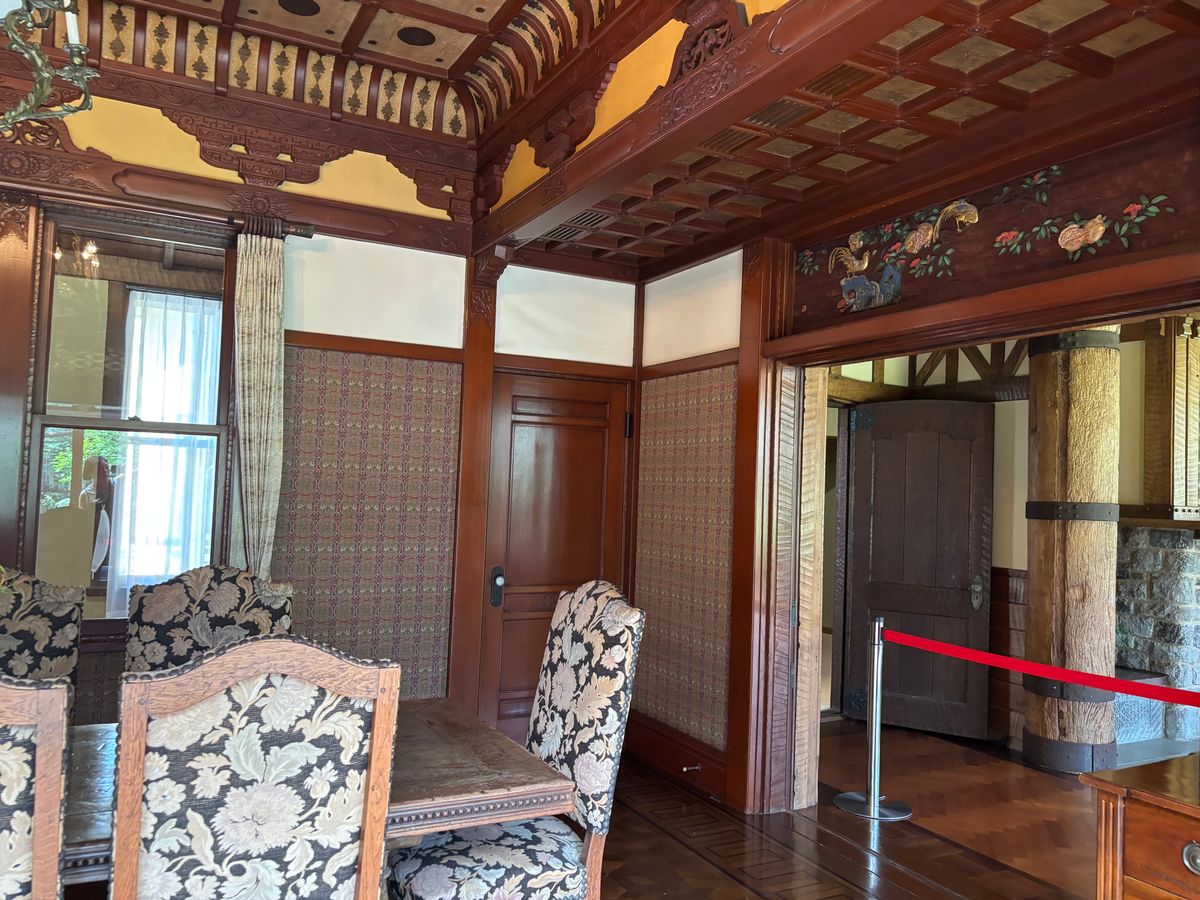
The Art Deco-style tiles and stained glass on the sundeck created the impression of a fusion of Western and Eastern beauty.
Now, we next arrived at the Western-style building “Gyoku-kei” (玉渓)(means Yuxi city). This was also completed during the reign of the second owner, Kaichiro Nezu.
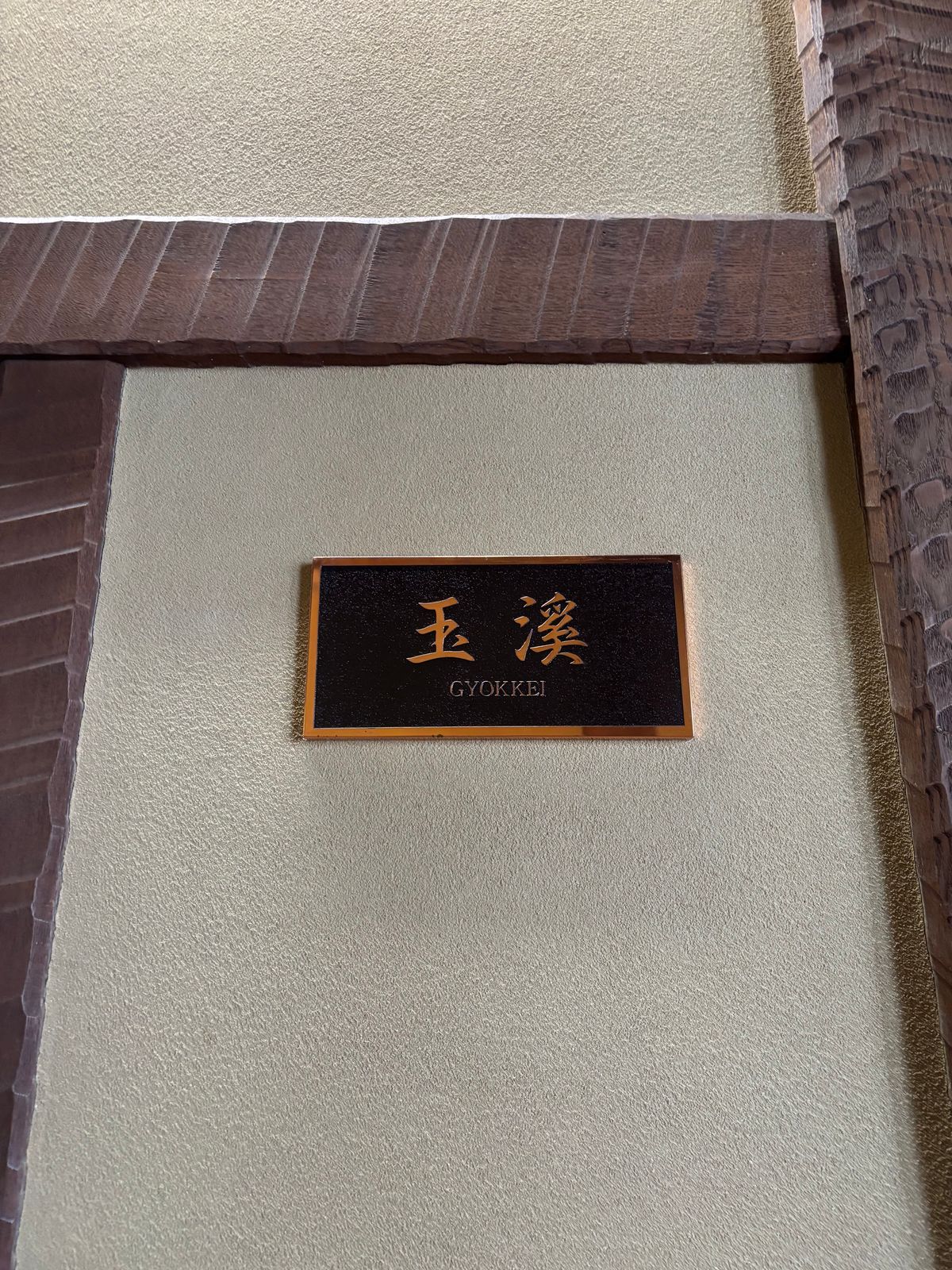
Gyoku-kei is built to resemble a European mountain villa.
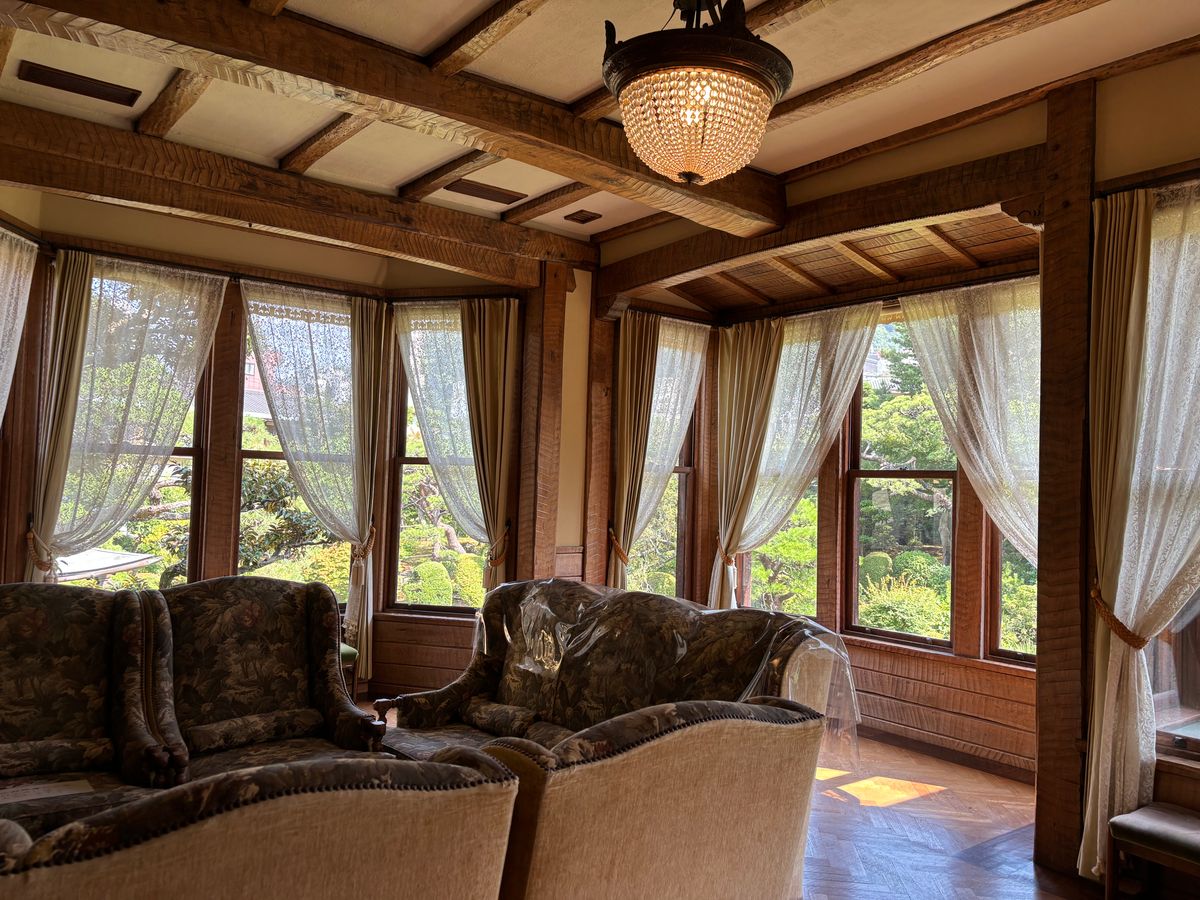
However, the Asian-style decorations on the fireplace coverings and the thick columns resembling those of an old temple or shrine make the space unique.
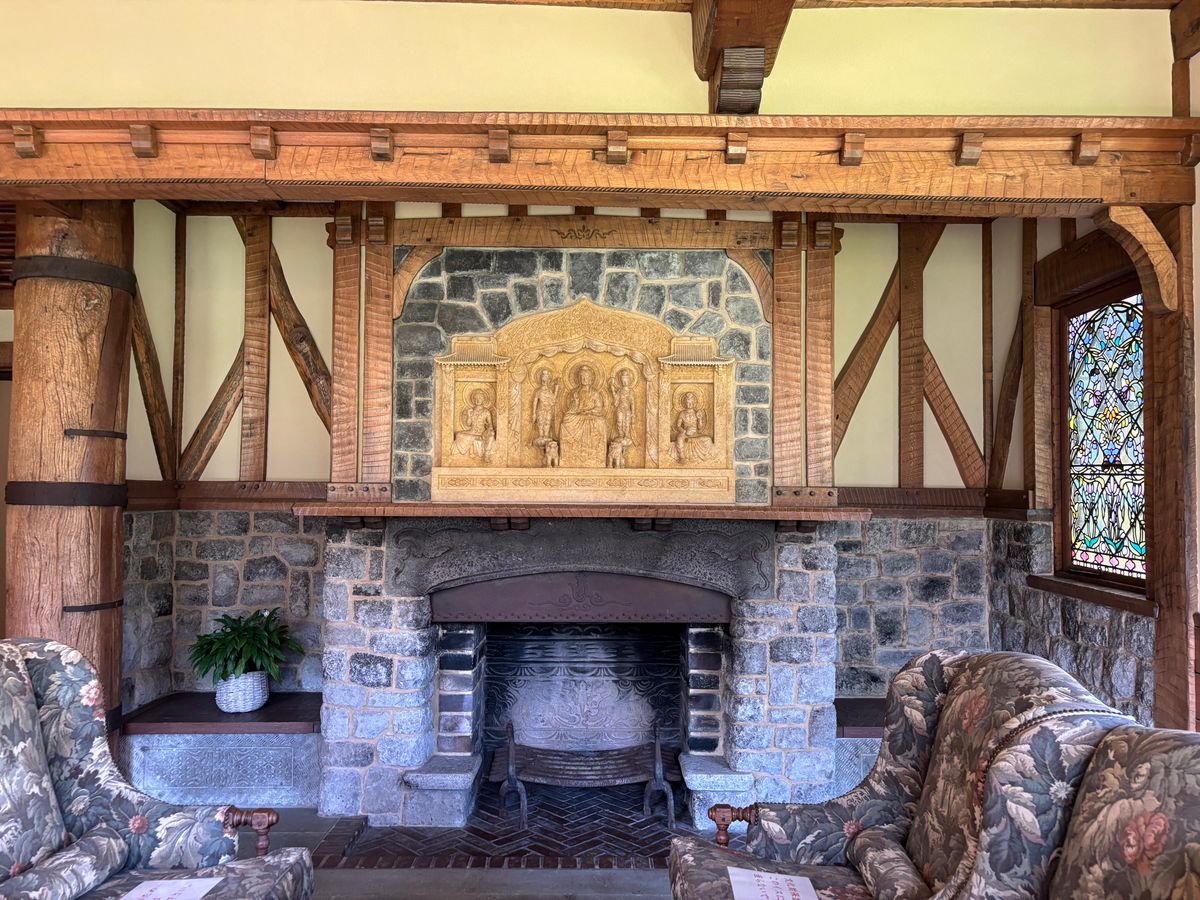
The next stop was the Western-style building, “Kongo”(金剛)(means vajra). Construction of this building also began during the reign of the second owner, Kaichiro Nezu, in 1928, and it was completed the following year, in 1929.
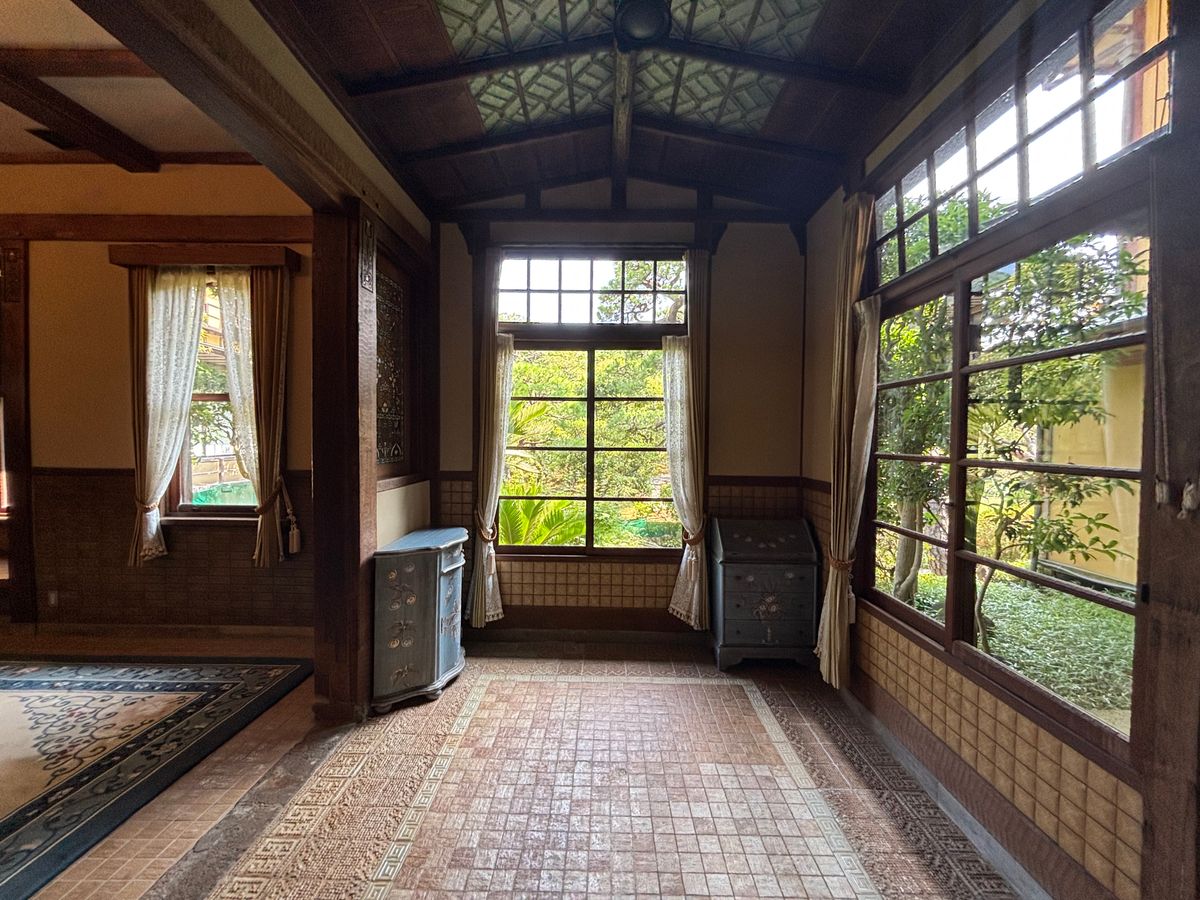
At the time of construction, it was a separate building, with the stone corridor in the picture serving as its entrance.
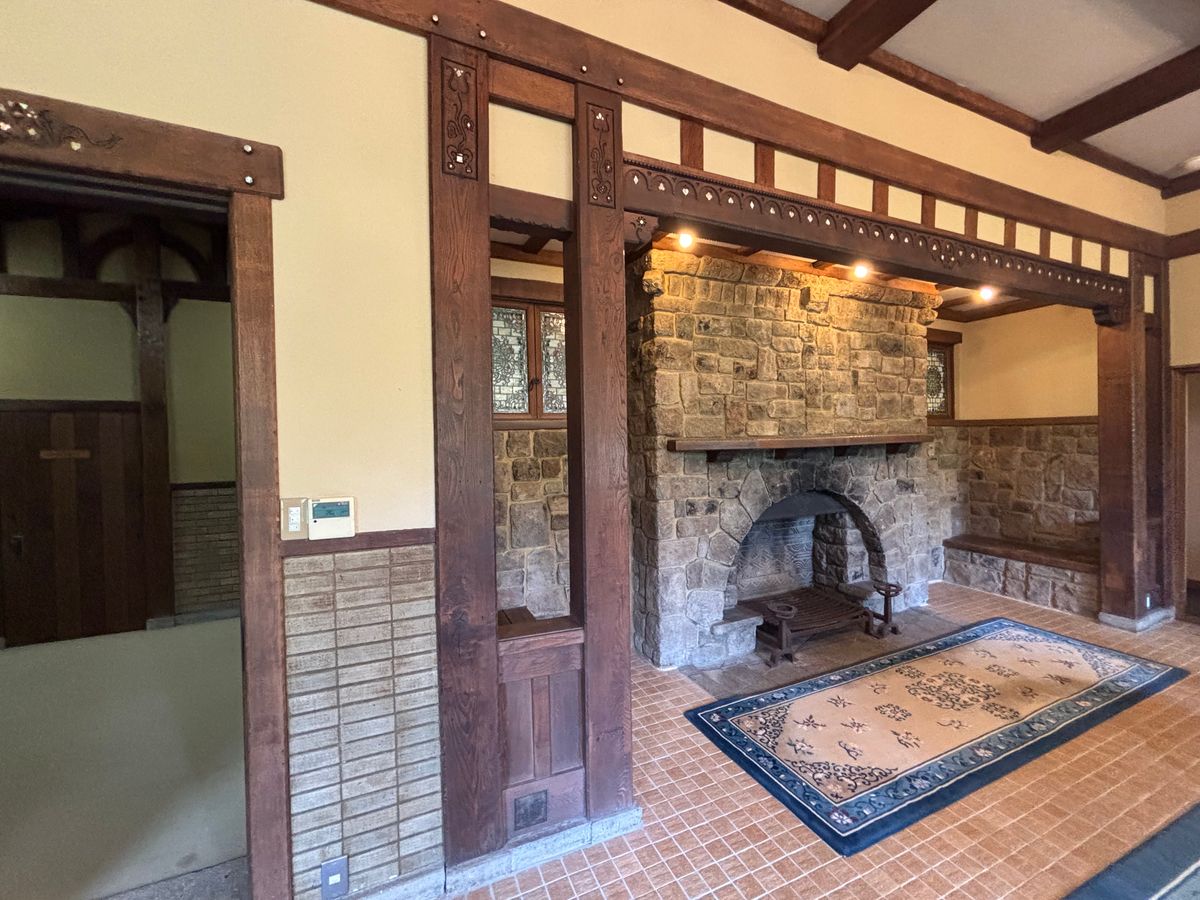
In Kongo, the pattern above the fireplace is decorated with spades, hearts, diamonds and clubs, as well as floral and grass motifs. While the design appears martial, it is pleasing to discover the skillful beauty of the craftsmanship.
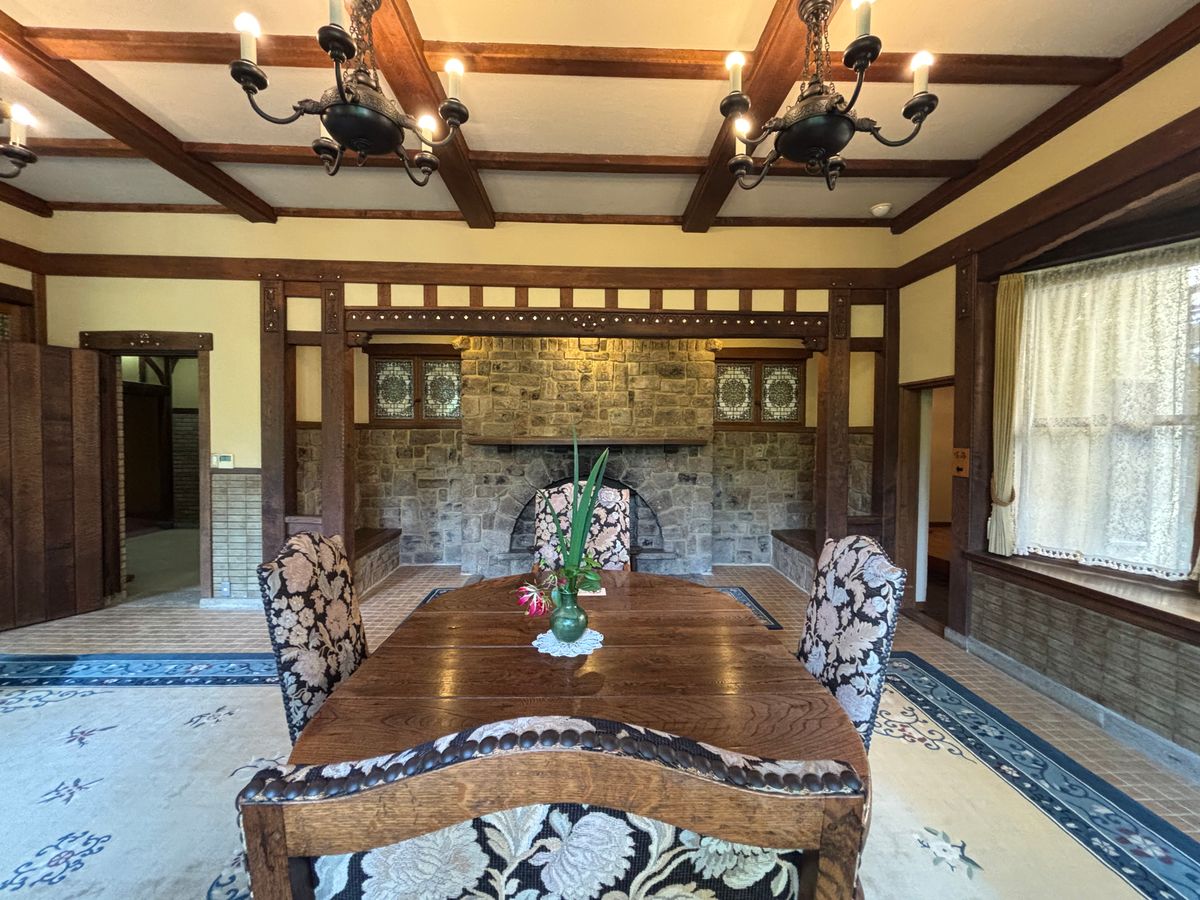
It's fair to say that this Roman-style bathroom, which is the best part of the Kiunkaku tour, is something that should not be missed.
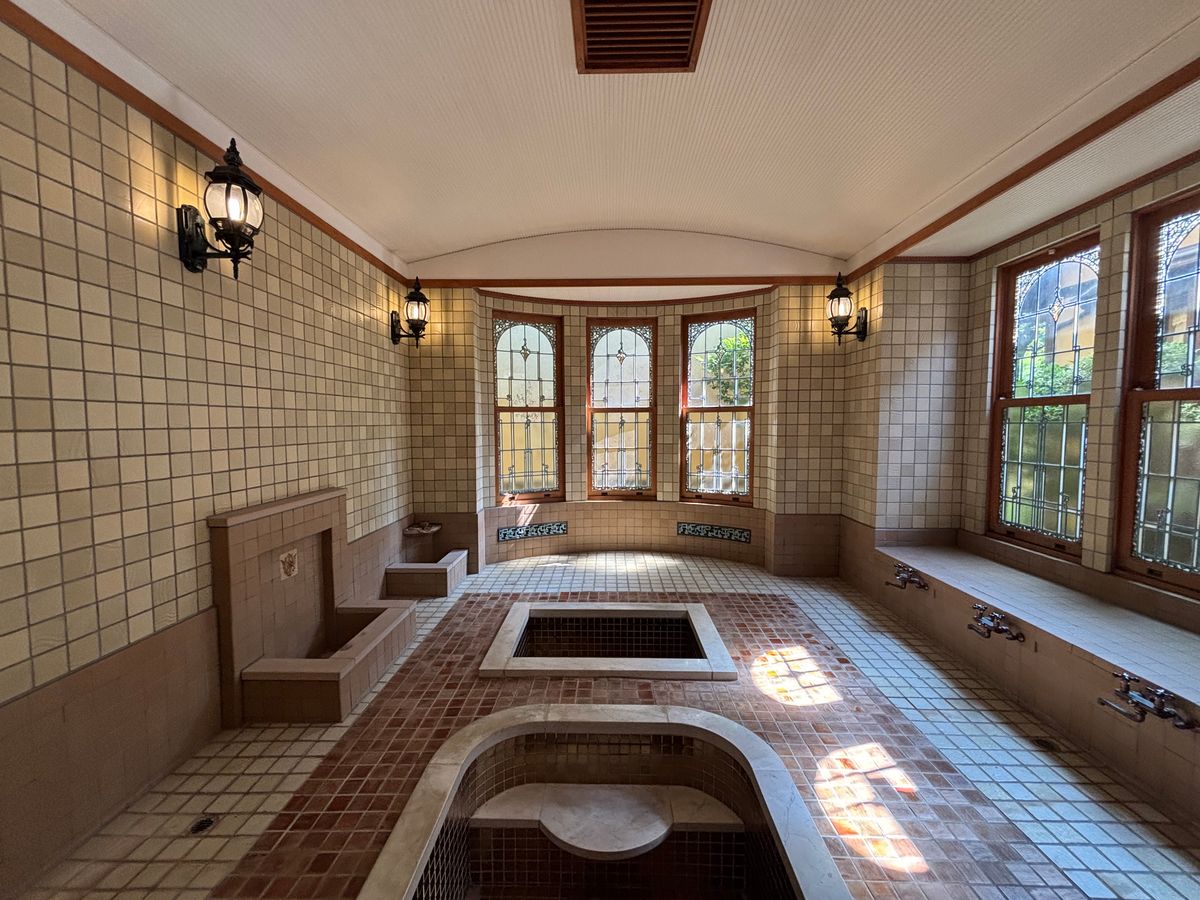
Yes, it's adorable! The beauty of the space lies in the sense of openness and nostalgia that it evokes, which is irresistible to bath lovers.
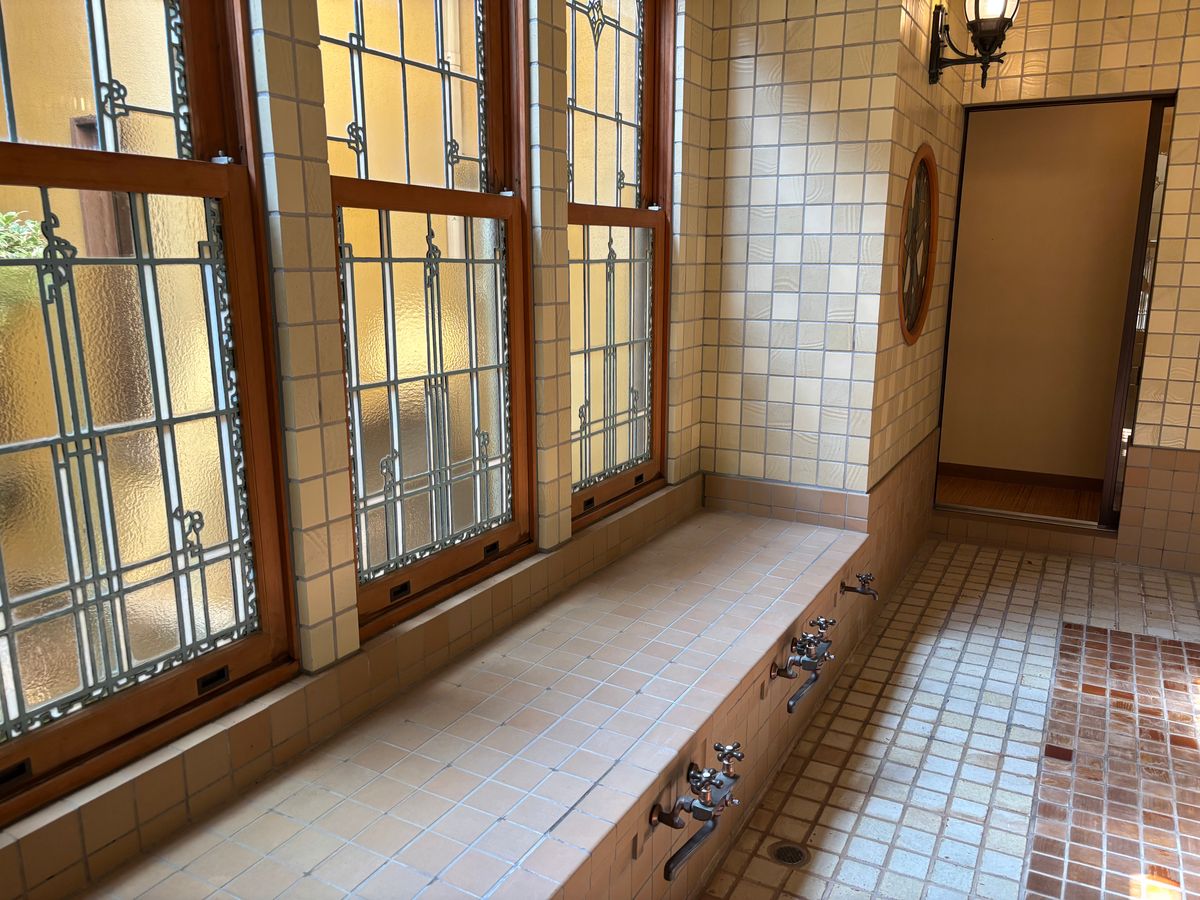
The Roman-style bathrooms were renovated in 1989, with many parts replaced by modern materials. However, the stained-glass windows and terracotta hot-water spouts are said to date back to the original construction.
Tile enthusiasts will adore the combination of gold and salmon pink. The description reads: "Wooden tiles around the bathtub provide a pleasant feel and a non-slip effect. From a distance, they look completely ceramic.'
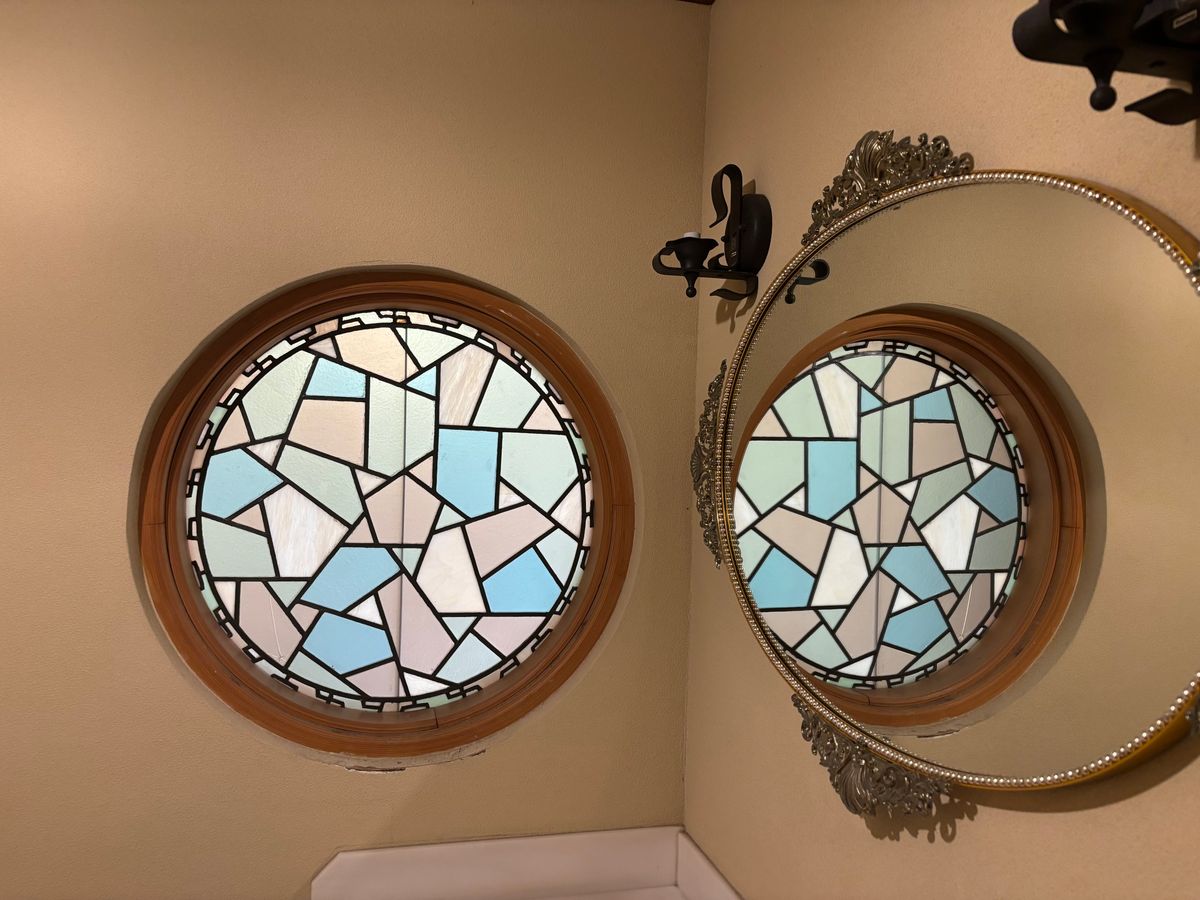
You can imagine what it used to be like, as at the time of construction the area was covered with tatami mats and had a dressing room the size of nine mats.
The last stop was the Japanese-style building “Kujaku” (孔雀)(means Peacock). Construction began in 1918 as part of the villa of the first owner, Nobuya Uchida, and was completed in 1919, making it one of the oldest buildings in the Kiunkaku complex.
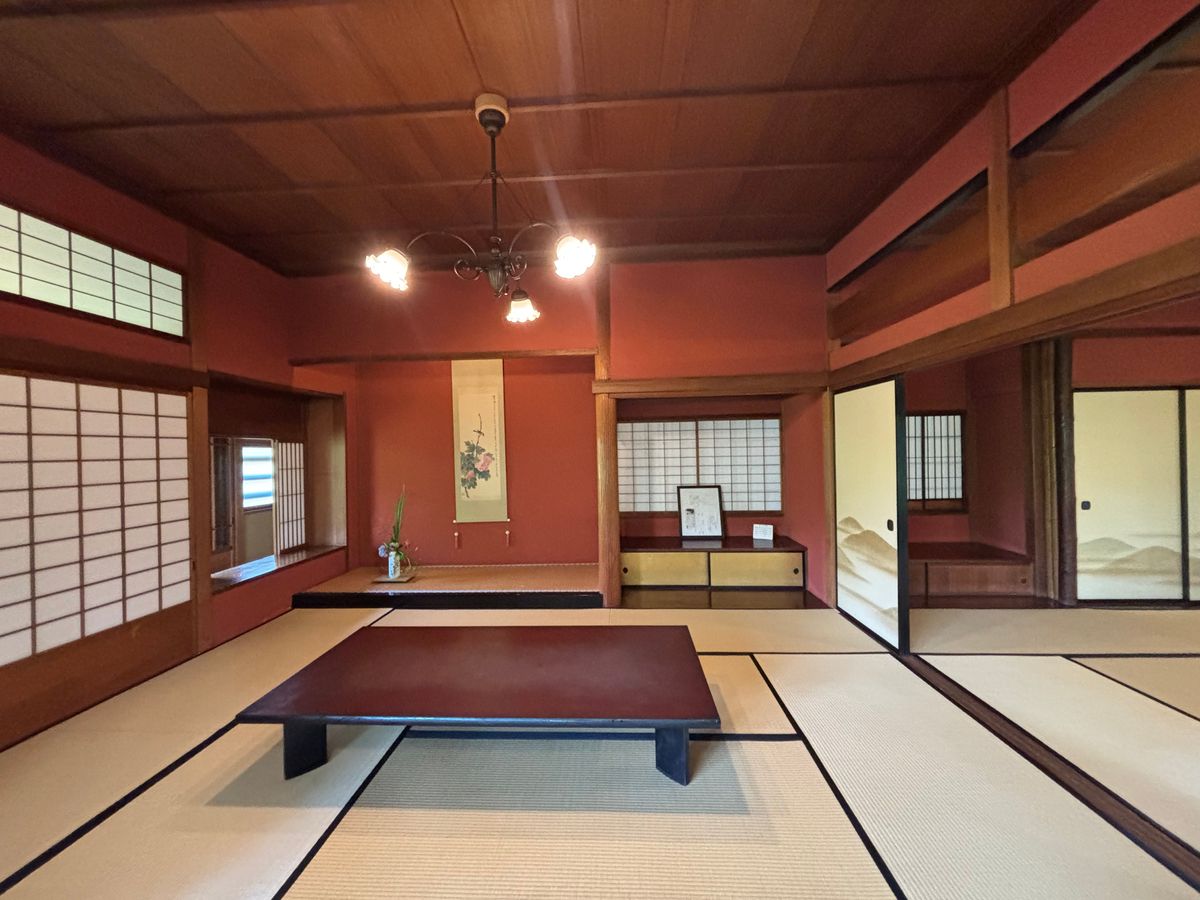
It was relocated in 1953 when the guest rooms and banquet hall were extended as a ryokan, Japanese-style hotel. Tatami rooms with a “Tokonoma” (床の間)(means alcove) are few and far between nowadays. The atmosphere is nostalgic, like coming back to your grandmother's house.The lights are beautiful and retro in some way.
At the end of the tour, you can take a break in the café and enjoy a selection of Japanese green tea and sweets.
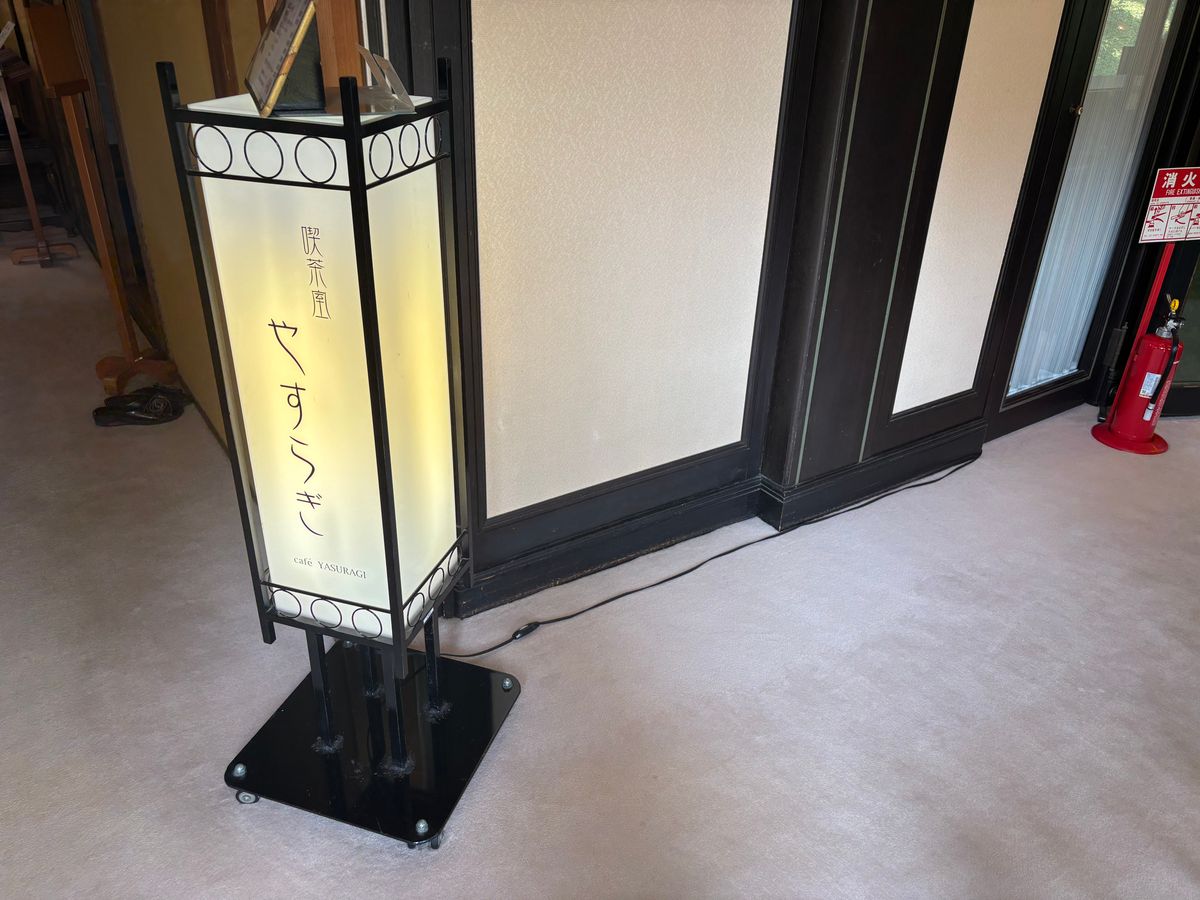
Don't forget to take a stroll through the vast Japanese gardens on a sunny day.
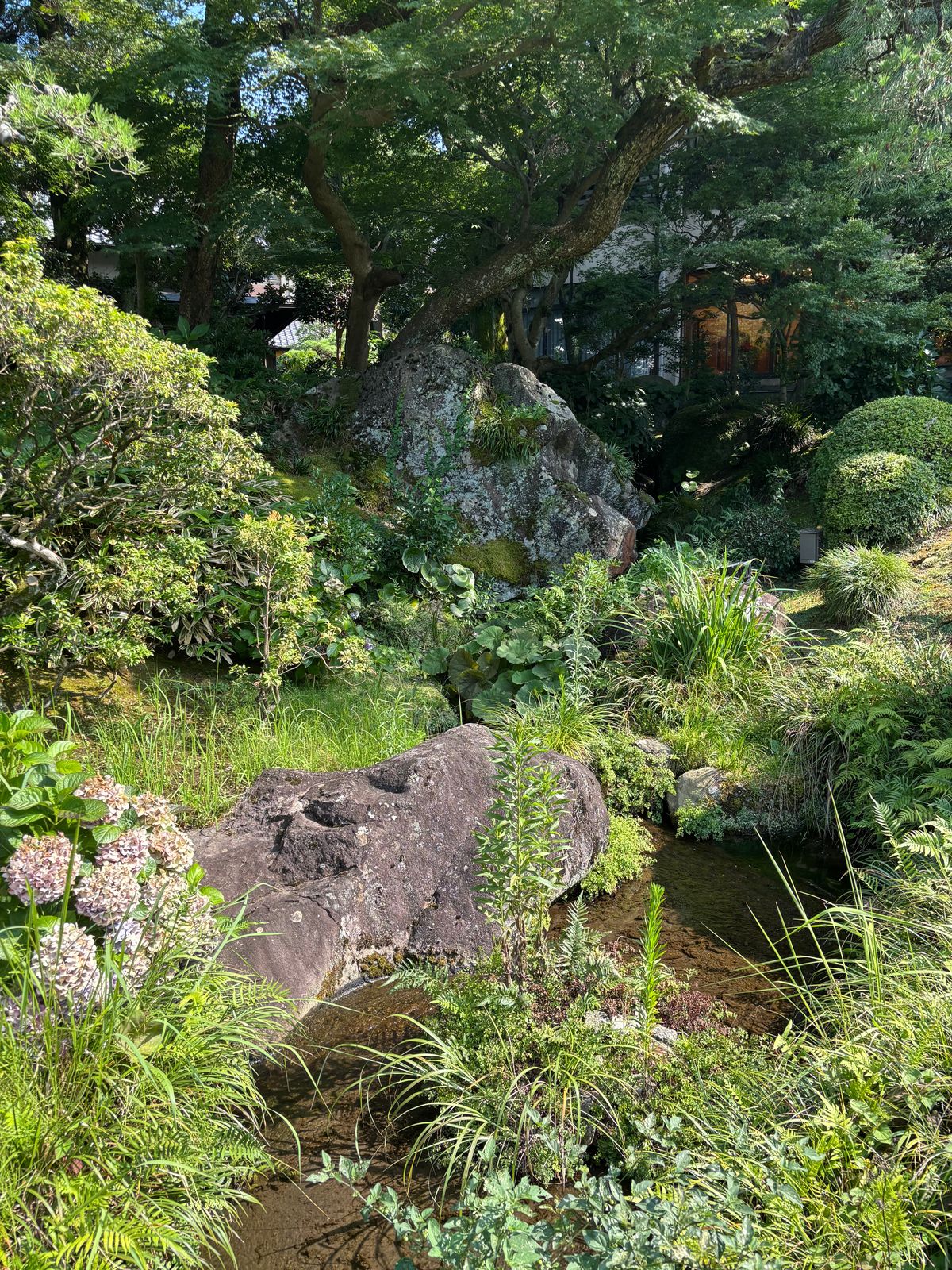
Finally
Kiunkaku is an essential sightseeing spot in Atami, where Japanese architecture blends with Western and Eastern styles to create a unique aesthetic. Don't just pass through each room; take the time to appreciate the beauty of the decorations and all the details. Cash is essential! We recommend withdrawing cash at the station before heading there!
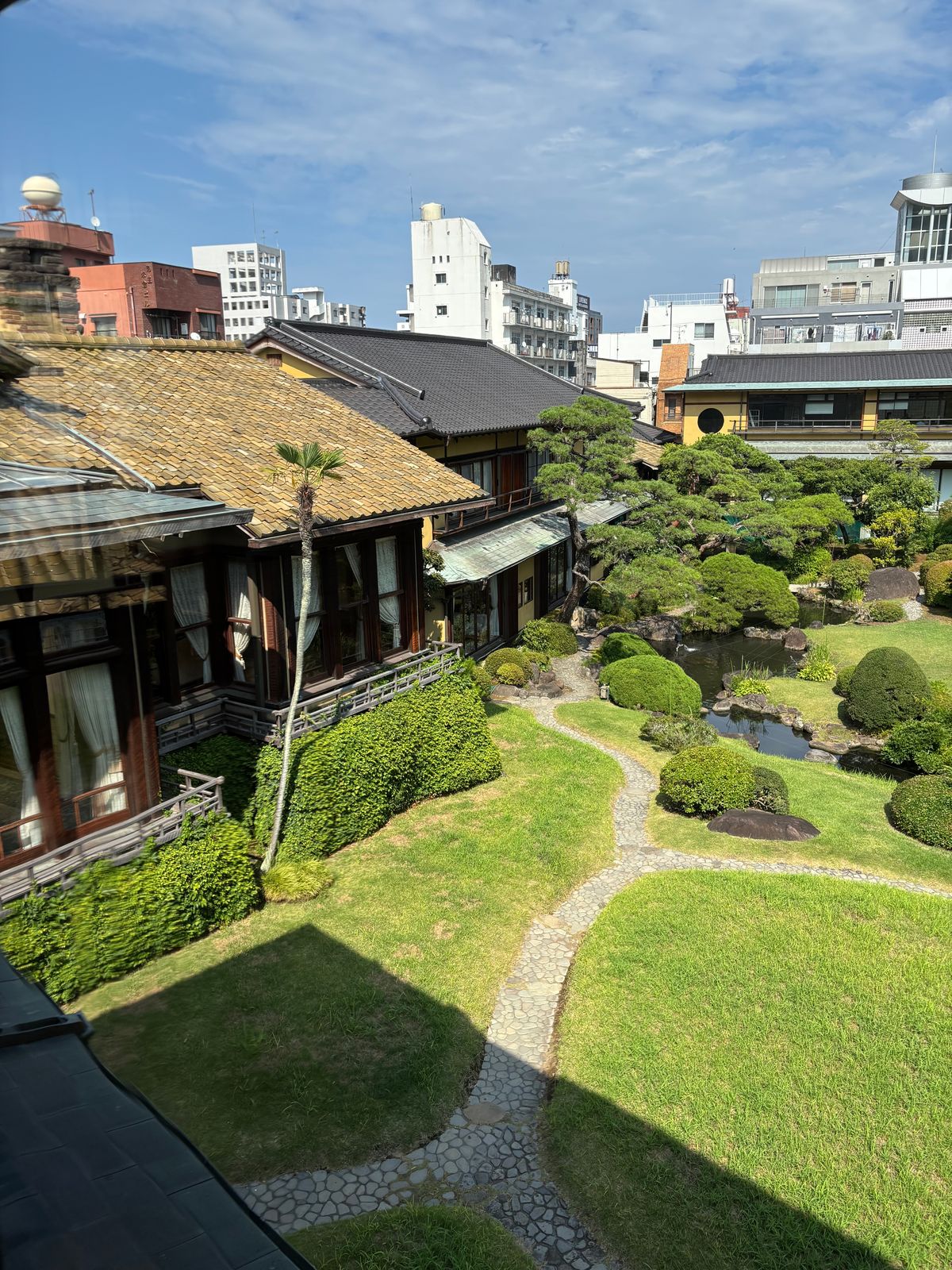
HP of Kiunkaku→https://kiunkaku.jp

